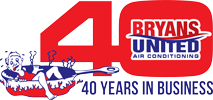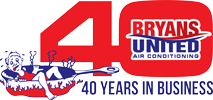A home renovation might fill you with anticipation and excitement, but it also requires significant planning and effort. In addition to issues like materials, construction, and carpentry, you must also consider the safety and effectiveness of your HVAC system. A renovation can damage your air conditioner, furnace, and other components of the system, and it can also necessitate a change in your appliances and infrastructure.
Dust Can Compromise Your HVAC System’s Moving Parts
The moving components of your interior HVAC units could suffer from exposure to dust. As you saw through wood and tear down sheet rock, clouds of dust infiltrate every nook and cranny of your home. If dust gets into the blower, fan coil, or other areas of your air conditioner or furnace, you might need to have them cleaned.
Dust and debris can inhibit your HVAC unit’s ability to produce cool air in the summer and warm air in the winter. Additionally, it adds wear and tear to the unit, which means you might have to replace it more quickly than you would have otherwise. Contact an HVAC professional to book an inspection and, if necessary, maintenance, so you don’t have to worry about it.
Additional Square Footage Might Exceed Your AC’s Load Capacity
When an HVAC professional installs an air conditioner, he or she conducts a load capacity evaluation to determine what size AC is right for the home. When you add square footage to your house during a renovation or remodel, you could end up with a house that exceeds your current AC’s load capacity.
When this happens, you can replace your air conditioner with a larger one or you can fit the extra square footage with an independent unit. For example, mother-in-law suites frequently have their own thermostats and ACs. Consult an HVAC expert to decide which solution makes the most sense for your home.
The Configuration of Vents Might Not Serve the Renovated Structure
When you change your home’s configuration, you might have to adjust the placement, location, and direction of vents, or add more vents to serve additional floor space. Never attempt to move or add vents without the assistance of a professional. An expert will know exactly how to configure them for maximum energy efficiency and comfort.
Consider consulting an HVAC tech before you begin your renovation. Show him or her the plans for your house and ask about any restructuring that needs to take place. If you need to add or move vents, schedule a service call for the job. You’ll thank yourself later because misplaced vents can create uneven temperatures in the home and other problems.
Dust Can Clog Filters, Vents, and Registers
In addition to infiltrating the moving parts of your HVAC system, dust can also clog air filters, vents, and registers. Always change your air filter after you complete a renovation or remodel so the dust that catches in its fibers doesn’t get sucked up into the system or hamper the free flow of air.
You can clean the grates of vents and registers with a vacuüm cleaner, but don’t attempt to clean any further than that. Remove the vent covers and vacuüm both sides to remove all traces of dust and debris. You can also wash them in warm, soapy water.
Dirt and Debris Can Build Up in Ductwork
Your ductwork transports air from your HVAC unit to the interior of your home. This complex network of tubing can become tainted with dust and debris during a renovation, especially if you forget to turn off the system while you work or if you don’t cover registers and vents.
If you leave dust to accumulate in your ductwork, your home might develop poor indoor air quality and your air conditioner might have to work harder to maintain the temperature on the thermostat. Duct cleaning removes all the dust and irritants so you can breathe freely.
A home renovation can make your house feel new again, but don’t neglect the important functions of your home. Your HVAC system must run efficiently to keep your energy bills under control. If you’re planning a home renovation, call us at 504-208-2071 to discuss your HVAC needs.
Image provided by Shutterstock


